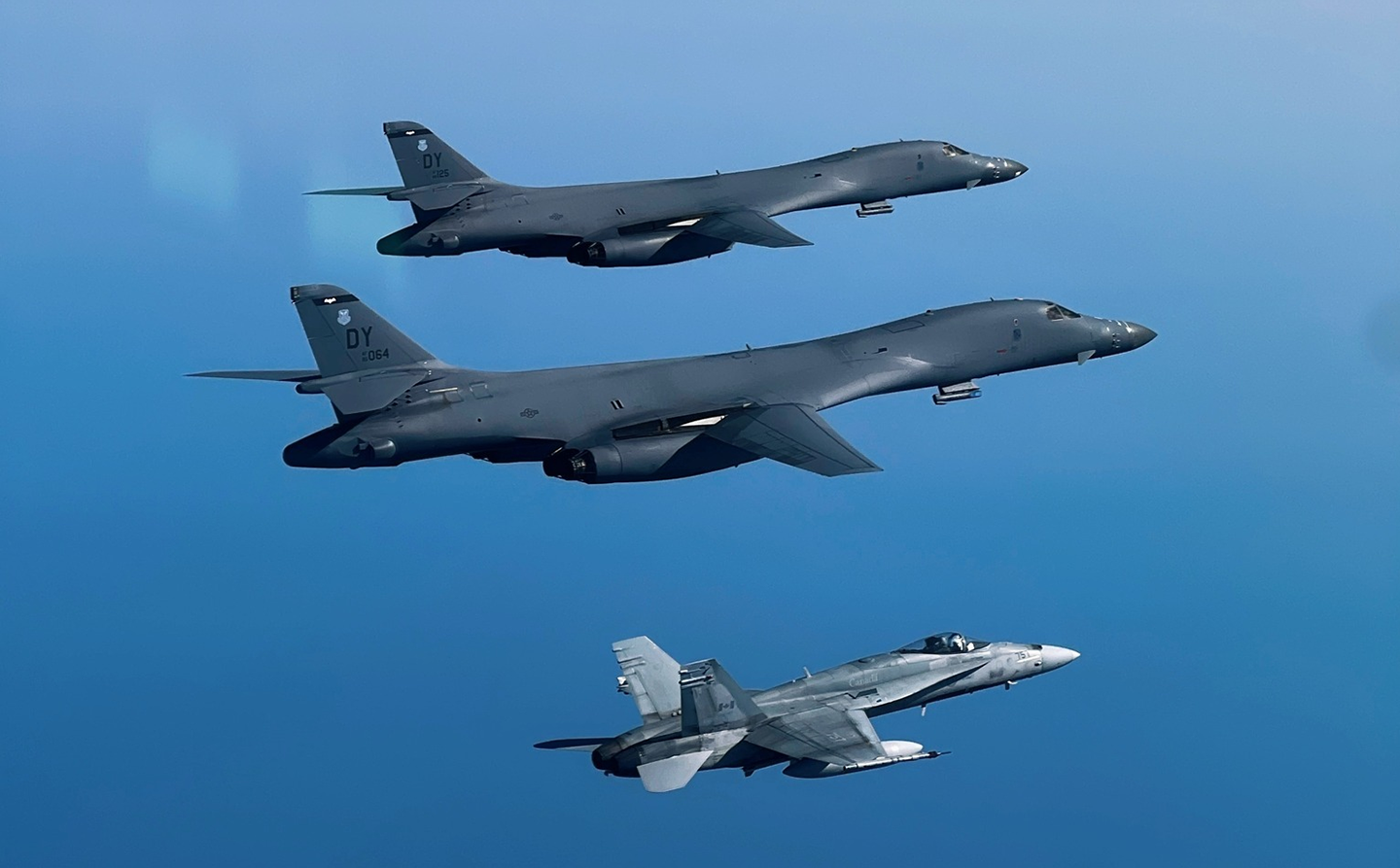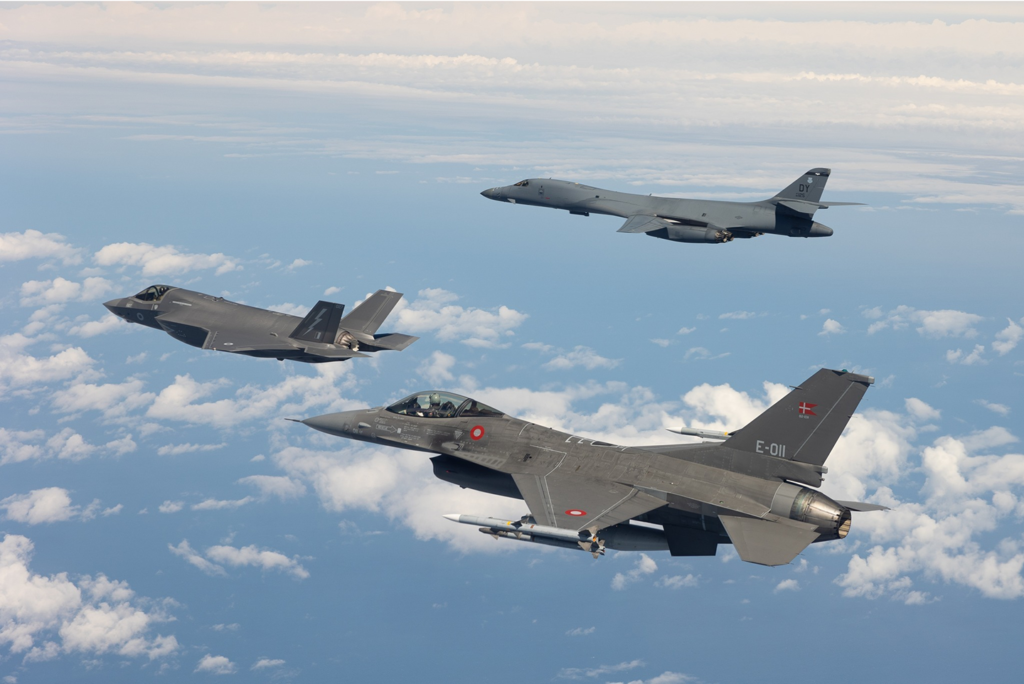British and Danish fighters shadow a U.S. B-1 bomber during Operation Tower Guardian.
THE WATCH STAFF
Operation Tower Guardian, a bomber intercept involving warplanes from seven allied nations across airspace spanning the Arctic, is the latest demonstration of the commitment of the United States and its allies and partners to defend against threats to the international rules-based order.
The June 26, 2023, event, an iteration of ongoing Operation Noble Defender, showed the readiness of the North American Aerospace Defense Command (NORAD) and U.S. Northern Command (USNORTHCOM) to deter and defend against threats to the homeland. The operation also displayed the ability of allied and partner militaries to work together seamlessly to defend against a common threat in a globally integrated layered defense (GILD). In the past, U.S. and Canadian forces have always been postured to defend the borders of North America against aggressive Russian bomber sorties flown to cruise missile launch points. The GILD concept pushes the NORAD/USNORTHCOM defense posture out to thousands of miles away from North America’s borders, rather than simply playing “goalie” close to the homeland.
This operation involved two U.S. B-1 bombers that took off from a Royal Air Force (RAF) base in the United Kingdom and flew east over the North Sea toward the coast of Denmark. Initially, the bomber task force (BTF) was intercepted by two RAF F-35 fighters.
As the bombers approached Denmark, the RAF F-35s successfully handed off the bombers to two Danish F-16s. As the BTF swung north toward the west coast of Norway, another handoff was made to British and Swedish warplanes. Two RAF EF-2000 Typhoons scrambled from a forward operating location in Norway and two Swedish JAS-39 Gripens took off from another base in that country. Those planes shadowed the bombers as they flew north along the Norwegian coast.
Over northern Norway, two Norwegian F-35s along with two forward-deployed Finnish F-18s took over from the Typhoons and Gripens. The Norwegian and Finnish jets shadowed the BTF as it turned west toward the Faroe Islands and a naval chokepoint between Greenland, Iceland and the United Kingdom known as the GIUK Gap. There, sensors maintained electronic custody of the bombers until two Canadian CF-18s intercepted the BTF off the coast of Newfoundland and Labrador.

The Canadian fighter jets shadowed the bombers until they handed the BTF off to two U.S. F-15Cs at the border of the U.S. and Canada. After the U.S. jets completed their intercept and shadowing of the B-1s, the operation concluded.
Operation Tower Guardian involved 14 fighters from the seven allied and partner nations as well as refueling aircraft and was considered a success, showing that synchronization and integration of communications and tactics across multiple national territories and U.S. geographic commands can function seamlessly.
Operations such as Tower Guardian have strengthened GILD strategy and have deepened the relationship between the U.S. and its European and Nordic allies. Those nations have proven to be trusted global partners — especially as climate change has opened much of the Arctic to increased navigation and military activities.
Such operations are central to Arctic defense and continued assured access to the global commons and have increased in scope in recent years.
The U.S. National Strategy for the Arctic, released in 2022, identifies the importance of countering Russian and the People’s Republic of China’s influence in the region.
The Pentagon has beefed up resources and personnel at the nation’s northernmost base – Pituffik Space Force Base, previously known as Thule — in Greenland.
Noble Defender operations are planned to demonstrate the capability and readiness to defend North America from attacks along the Arctic avenues of approach and to show that the U.S. and its allies can deploy to Arctic forward-operating locations to support a GILD network across the region.

